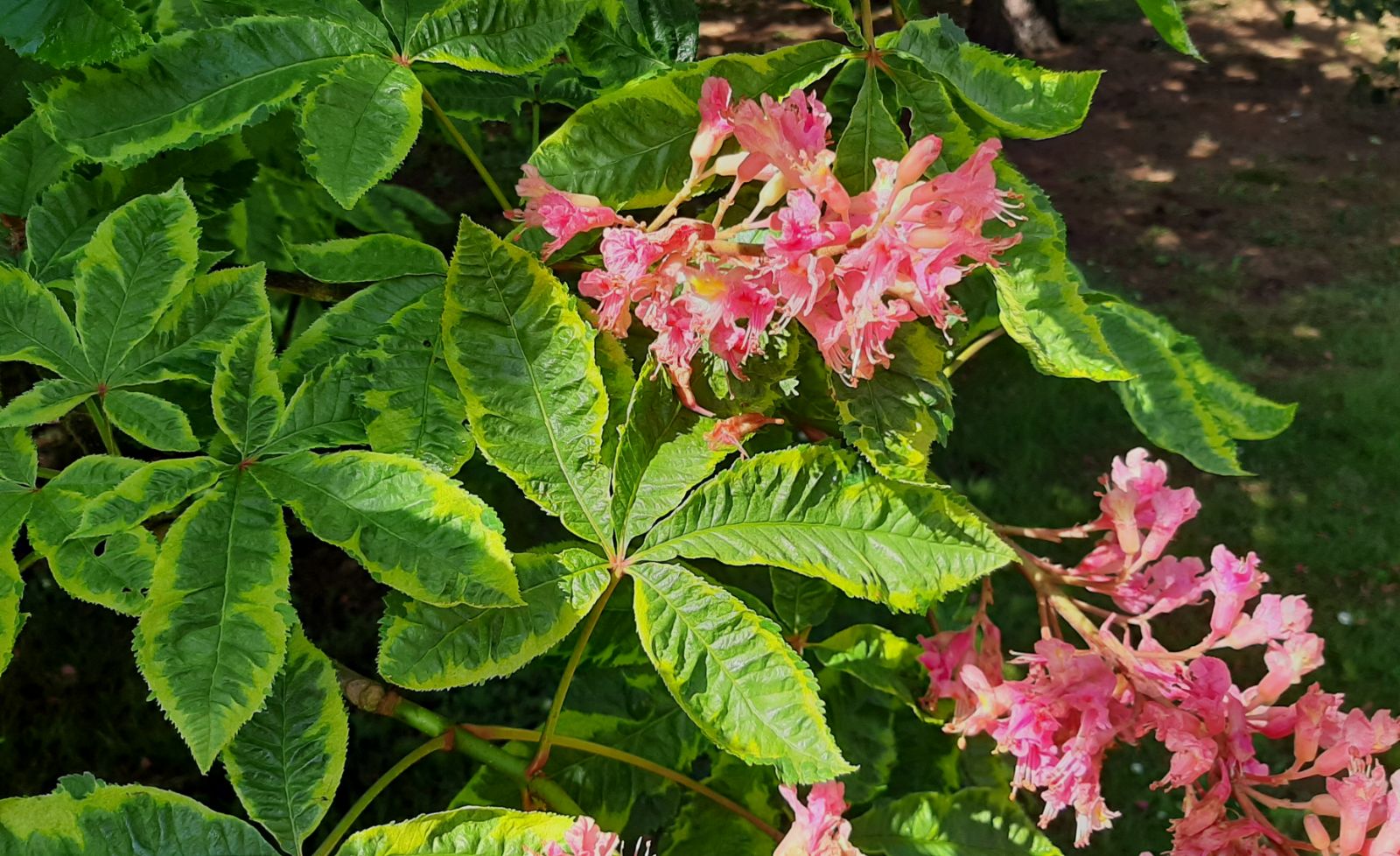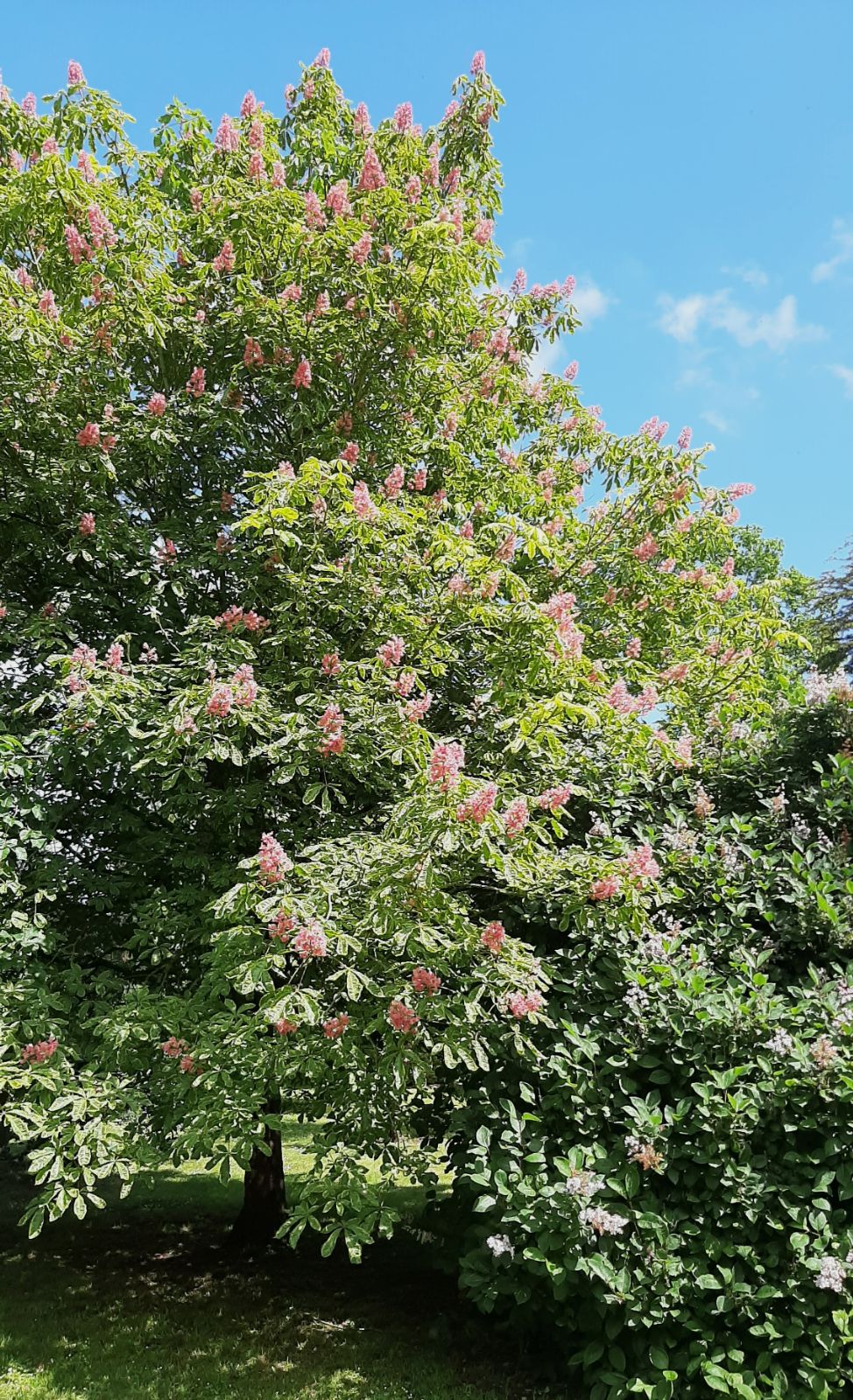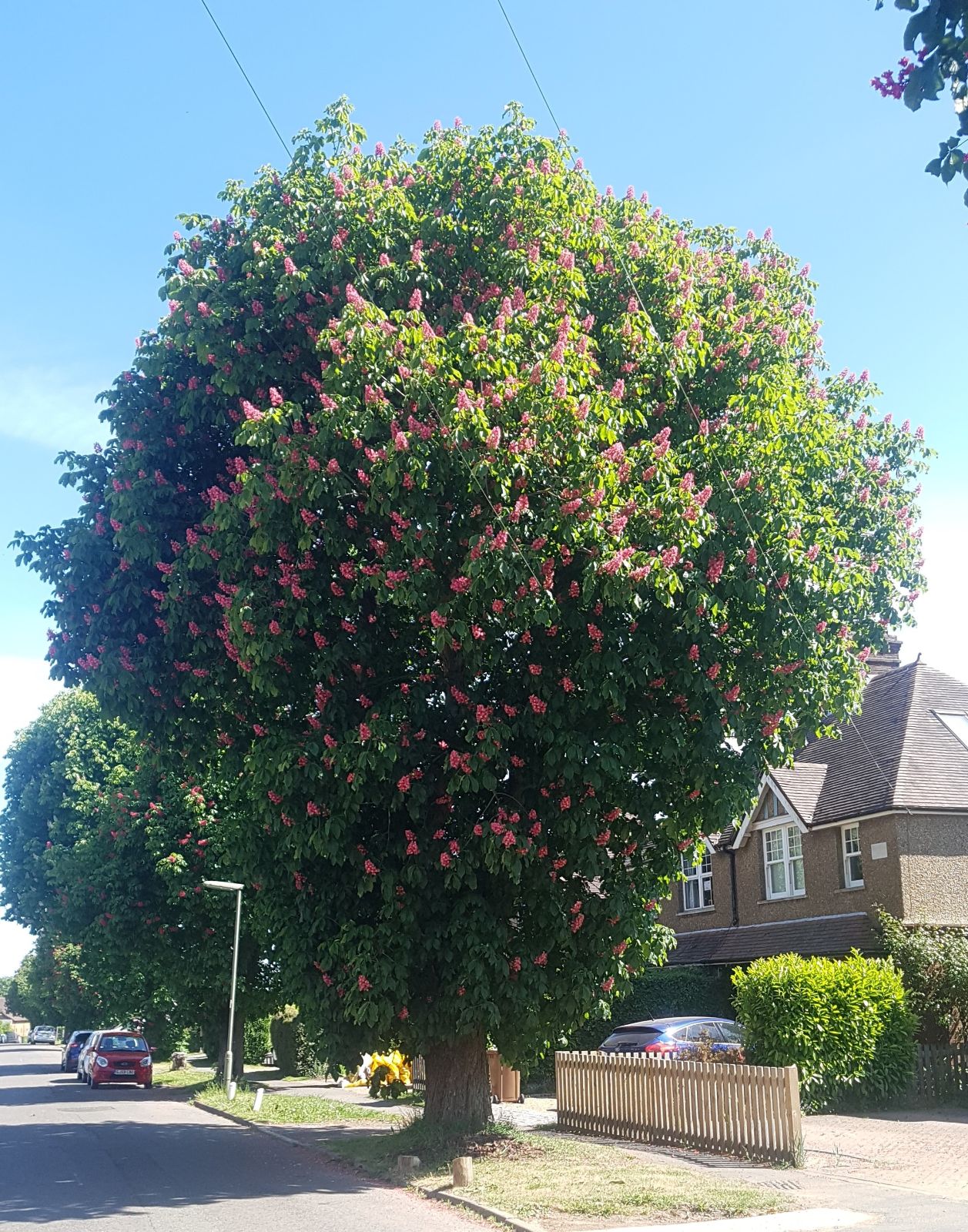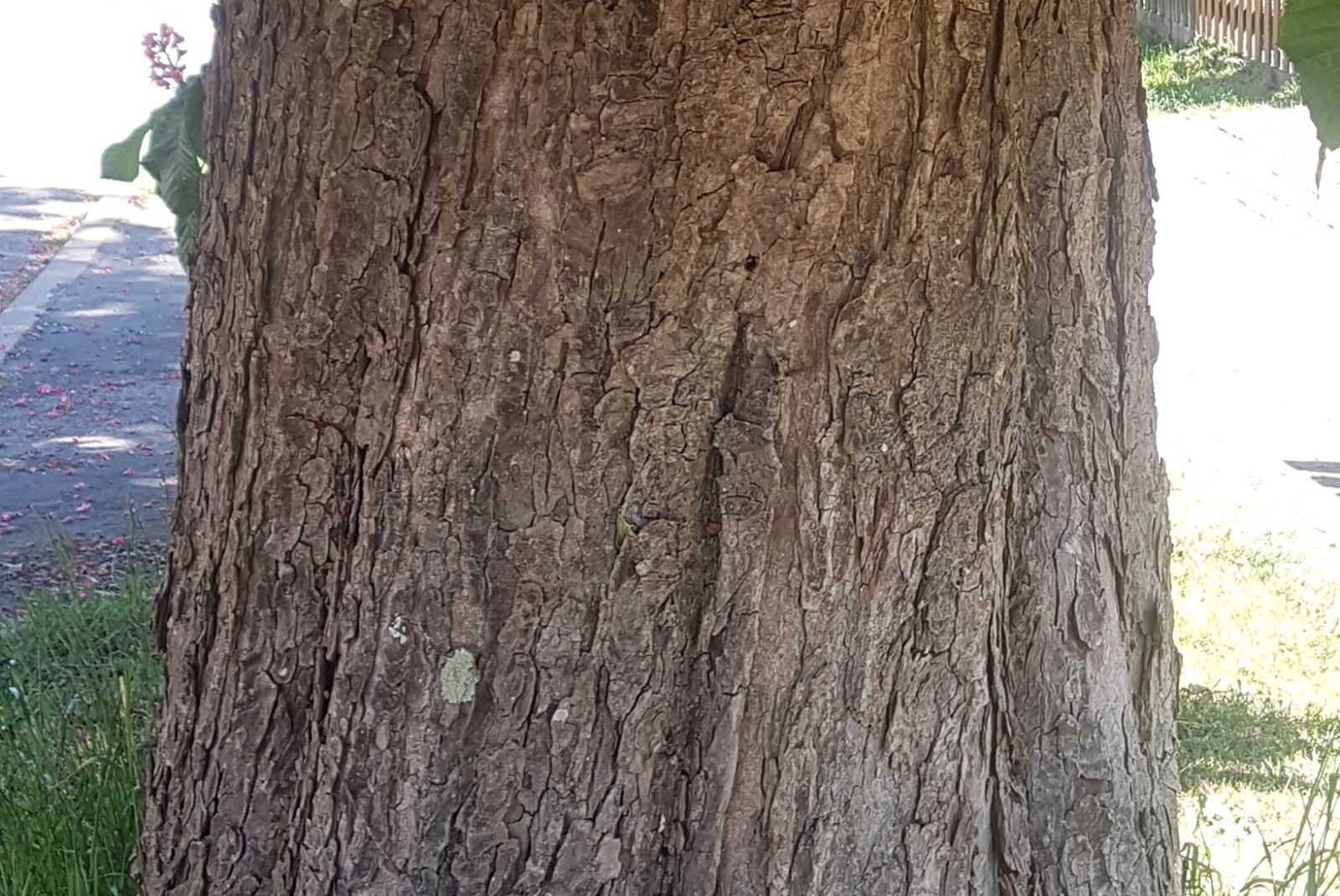Aesculus × carnea
Credits
Article from Bean's Trees and Shrubs Hardy in the British Isles
Recommended citation
'Aesculus × carnea' from the website Trees and Shrubs Online (treesandshrubsonline.
Genus
Common Names
- Red Horse-chestnut
Infraspecifics
Other taxa in genus
- Aesculus × bushii
- Aesculus californica
- Aesculus chinensis
- Aesculus + dallimorei
- Aesculus flava
- Aesculus glabra
- Aesculus glabrescens
- Aesculus glaucescens
- Aesculus hippocastanum
- Aesculus indica
- Aesculus × marylandica
- Aesculus × mutabilis
- Aesculus × neglecta
- Aesculus octandra
- Aesculus parviflora
- Aesculus pavia
- Aesculus splendens
- Aesculus sylvatica
- Aesculus turbinata
A tree of rounded form, 30 to 50 ft high in this country, but 60 to 80 ft high on the continent; winter buds slightly resinous. Leaves composed of five or seven leaflets, which are very like those of the common horse-chestnut, but smaller, darker green, and usually with a very short stalk. Flowers deep red on a panicle 6 to 8 in. high, 4 in. diameter; stamens slightly protruding. Fruit globose, slightly prickly, 11⁄2 in. diameter.
Of the origin of the tree nothing certain is known. There is little doubt, however, that it is a hybrid between the common horse-chestnut and A. pavia, having the habit and foliage of the former, and the colour of the flowers and glandular-edged petals of the latter. It probably originated as a chance hybrid made by insects quite early in the nineteenth century, and had attained a considerable size before its distinctness was noticed. It was first distributed around 1820; the parent tree is thought to have grown in Germany and its original offspring were probably the products of budding or grafting.
The hybrid has proved to be of great scientific interest. About 1896 some half a dozen plants were raised from seed at Kew, which proved to be no different from ordinary A. × carnea, or from each other, except in the depth of colour of the flower. As was remarked in previous editions of this work, it is unusual for the progeny of a hybrid to resemble the parent so closely, but the reason is now understood and the original observations made at Kew have been confirmed by further experiment on a larger scale. The original A. × carnea must have been a diploid, with forty chromosomes, as in the parents. It was probably rather sterile, as is usually the case with hybrids between such distantly related species as A. hippocastanum and A. pavia, and would not have bred true even if fertile seed had been produced. But at some stage in the history of the clone (perhaps on the parent tree itself), spontaneous doubling of the chromosomes must have taken place, thus giving to each chromosome a matching partner and permitting the normal pairing that takes place in the flowering plants as a preliminary to reproduction. This phenomenon, of which many instances have been recorded, not only confers fertility on a previously sterile or partly sterile hybrid, but permits it to breed more or less true. Another well-known example is Primula × kewensis.
If the doubling of the chromosomes took place on the original parent tree – a possibility suggested above – then only part of it would have been tetraploid (i.e. with eighty chromosomes instead of the normal forty), and the scions would have given rise to diploid or tetraploid plants according to the branch from which they were taken. This might explain reports from the mid-nineteenth century that A. × carnea did not breed true, whereas the tree at Kew did so.
The trunk of this tree frequently becomes diseased when over 1 ft in diameter, and covered with ugly eruptions which ultimately decay and disintegrate into a sort of powder. According to Massee, there is no parasitic organism, animal or fungoid, present to cause this disease, which appears to be solely due to the abnormal development and ultimate rupture and death of the cells.
'Aureo-marginata'
Leaves margined yellow.
'Briotii'
Raised from seed at Trianon in 1858; it is practically identical with the type, except that it has larger and more finely coloured panicles. Other named varieties are:
'Foliis Marginatis'
A variegated form with a dark green border to the leaf, then an irregular band of yellow, the centre being pale green.A garden variety with pendulous branches has also been described, but this character is common in some degree to most old trees.
'Plantierensis'
Derscribed by Bean as Aesculus × plantierensis
A hybrid raised in the nursery of Messrs Simon-Louis Frères, at Plantières, near Metz, its parents no doubt A. hippocastanum and A. × carnea. The seed came from the former, so that it is (if the generally accepted parentage of A. × carnea be correct) three-fourths common horse-chestnut and one part the red buckeye (A. pavia). It shows the characters of both its parents in the leaf; the leaflets being stalkless, as in A. hippocastanum, yet showing the more strongly ridged and uneven surface of A. × carnea. In shape and size the panicle is like that of A. hippocastanum, but the whole flower is suffused with a charming shade of soft pink, which it inherits from the other parent. In habit and general appearance it is intermediate. It has flowered at Kew for many years past, and I consider it a very beautiful and desirable acquisition. It has developed no fruit at Kew, and I understand from Mr Jouin, of Plantières, that it does not bear seed in his nursery. For public places this is an advantage. It is still true (1966) that it has produced no fruit at Kew; the fact that it is a triploid explains this sterility.
From the Supplement (Vol. V)
This is properly placed under A. × carnea as cv. ‘Plantierensis’.












